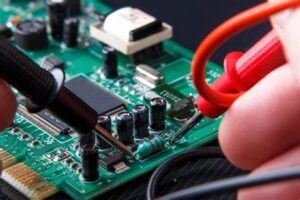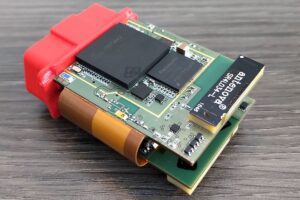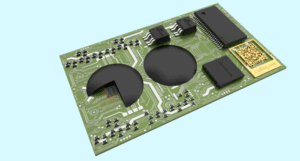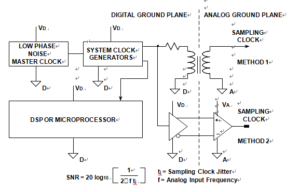On Board Diagnosis PCB Cloning: Restoring Complex Industrial Circuitry with Precision
In today’s technologically advanced industries, on board diagnosis (OBD) PCBs serve as critical components in systems that demand continuous performance monitoring, fault detection, and system health analysis. Whether integrated into automotive ECUs, industrial robotics, power electronics, or medical equipment, these boards help identify internal malfunctions in real time, minimizing downtime and improving operational efficiency. When such systems become obsolete, damaged, or unsupported, our professional on board diagnosis PCB cloning service offers a reliable solution to replicate, reverse engineer, and restore these complex diagnostic platforms.

Nei settori tecnologicamente avanzati di oggi, le schede PCB per diagnosi di bordo (OBD) svolgono un ruolo fondamentale nei sistemi che richiedono un monitoraggio continuo delle prestazioni, il rilevamento dei guasti e l’analisi dello stato di salute del sistema. Che siano integrate in centraline elettroniche per autoveicoli, robotica industriale, elettronica di potenza o apparecchiature medicali, queste schede aiutano a identificare malfunzionamenti interni in tempo reale, riducendo al minimo i tempi di fermo e migliorando l’efficienza operativa. Quando tali sistemi diventano obsoleti, danneggiati o non più supportati, il nostro servizio professionale di clonazione di PCB per diagnosi di bordo offre una soluzione affidabile per replicare, effettuare il reverse engineering e ripristinare queste complesse piattaforme diagnostiche.
Unique Features of On Board Diagnosis PCB Boards
Unlike standard control PCBs, OBD PCBs integrate various analog and digital signal pathways, real-time processing units, memory banks for fault logging, and often communication modules for CAN, LIN, or Ethernet protocols. They are typically multi-layer PCBs, sometimes up to 10 layers, featuring:
-
Embedded microcontrollers or processors running diagnostic software
-
A/D converters for capturing sensor feedback
-
High-precision op-amps, resistive ladders, and calibration networks
-
Non-volatile memory storage for historical data logging
-
EMI filters and isolation zones to ensure robust signal integrity
These features demand a high degree of electrical accuracy, layout precision, and environmental robustness, making them highly specialized and non-trivial to duplicate.

Starsze lub uszkodzone płytki mogą zawierać przestarzałe lub oznaczone jako nieczytelne komponenty. Odzyskanie dokładnej listy BOM wymaga odniesienia krzyżowego do baz danych branżowych, dopasowania odcisków, a w niektórych przypadkach niestandardowej substytucji i ponownej walidacji. Izolacja sygnału i odporność na zakłócenia Płytki PCB OBD często zarządzają sygnałami czujników niskiego poziomu obok zakłóconych obwodów cyfrowych. Utrzymanie strategii podziału analogowego/cyfrowego, ekranowania i uziemienia podczas procesu klonowania ma kluczowe znaczenie dla zachowania wydajności.
Challenges in On Board Diagnosis PCB Cloning
Cloning or replicating an on board diagnosis PCB involves a deep and technically demanding process. Some key challenges include:
-
Multilayer Complexity
Extracting a full Gerber file, netlist, and schematic diagram from a densely packed, multi-layer board requires advanced techniques such as X-ray imaging, microsectioning, and high-resolution optical scanning. Signal trace mapping must be meticulously recreated, especially for differential pairs and impedance-controlled lines. -
Firmware & Embedded Logic
Many diagnostic PCBs include firmware stored in microcontrollers or EEPROMs. Without access to source code, our engineers perform firmware extraction and binary analysis to reproduce or modify the logic, ensuring full system functionality after duplication. -
Component Identification
Older or damaged boards may contain obsolete or marked-unreadable components. Recovering an accurate BOM list requires cross-referencing with industry databases, footprint matching, and in some cases, custom substitution and re-validation. -
Signal Isolation & Noise Immunity
OBD PCBs often manage low-level sensor signals alongside noisy digital circuits. Maintaining analog/digital partitioning, shielding, and grounding strategies during the cloning process is crucial to preserve performance.
Our Cloning Process
Our on board diagnosis PCB cloning workflow follows a comprehensive and structured approach:
-
Reverse engineering the physical board to recreate the CAD file, layout drawing, and Gerber data
-
Component recovery and substitution for hard-to-find or legacy parts
-
Prototype fabrication using high-grade PCB substrates (FR4 High-Tg, or polyimide if necessary)
-
Testing and validation of the remanufactured board under simulated real-world conditions
Manufacturing Considerations
OBD boards require tight manufacturing tolerances, especially when dealing with high-frequency signals and low-voltage analog inputs. We ensure:
-
Proper layer stack-up design and controlled impedance routing
-
Use of EMI shields, via stitching, and ground planes for signal integrity
-
Compliance with IPC standards for industrial and automotive-grade PCBs

يتطلب استنساخ أو تكرار لوحة دوائر مطبوعة للتشخيص المدمج عملية معقدة وتقنية شاقة. من بين التحديات الرئيسية: تعقيد الطبقات المتعددة يتطلب استخراج ملف Gerber كامل، وقائمة الشبكة، والمخطط التخطيطي من لوحة متعددة الطبقات ومزدحمة بكثافة تقنيات متقدمة مثل التصوير بالأشعة السينية، والتقسيم المجهري، والمسح الضوئي عالي الدقة. يجب إعادة إنشاء مخطط تتبع الإشارة بدقة، خاصةً للأزواج التفاضلية والخطوط التي يتم التحكم فيها بالممانعة. البرامج الثابتة والمنطق المدمج تحتوي العديد من لوحات الدوائر المطبوعة التشخيصية على برامج ثابتة مخزنة في وحدات تحكم دقيقة أو ذاكرة EEPROM. دون الوصول إلى شيفرة المصدر، يقوم مهندسونا باستخراج البرامج الثابتة وتحليل ثنائي لإعادة إنتاج أو تعديل المنطق، مما يضمن الأداء الكامل للنظام بعد النسخ. تحديد المكونات قد تحتوي اللوحات القديمة أو التالفة على مكونات قديمة أو مُعلَّمة بأنها غير قابلة للقراءة. يتطلب استرداد قائمة المواد (BOM) الدقيقة إحالة مرجعية متقاطعة مع قواعد بيانات الصناعة، ومطابقة البصمة، وفي بعض الحالات، استبدالًا مخصصًا وإعادة التحقق.
Conclusion
Cloning an on board diagnosis PCB is far more than duplicating a circuit—it’s about preserving system intelligence, restoring critical diagnostics, and maintaining industrial continuity. With deep experience in reverse engineering and remanufacturing complex PCBs, we provide reliable, scalable, and cost-effective solutions tailored to your industry’s needs.
Let us help you bring life back to vital diagnostic systems—clone, recover, and remanufacture with confidence.
Ideally, the crystal oscillator used on Sampling Clock Distribution from ON Board Diagnotis PCB Cloning should be referenced to the analog ground plane in a split-ground system. However, this is not always possible because of system constraints. In many cases, the sampling clock must be derived from a higher frequency multipurpose system clock which is generated on the digital ground plane.
It must then pass from its origin on the digital ground plane to the ADC on the analog ground plane. Ground noise between the two planes adds directly to the clock signal and will produce excess jitter. The jitter can cause degradation in the signal-to-noise ratio and also produce unwanted harmonics.
This can be remedied somewhat by transmitting the sampling clock signal as a differential signal using either a small RF transformer as shown in below Figure or a high speed differential driver and receiver IC.

Sampling Clock Distribution from ON Board diagnotis PCB Cloning
If an active differential driver and receiver are used, they should be ECL to minimize phase jitter. In a single +5 V supply system, ECL logic can be connected between ground and +5 V (PECL), and the outputs ac coupled into the ADC sampling clock input. In either case, the original master system clock must be generated from a low phase noise crystal oscillator.






